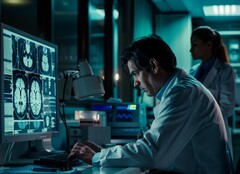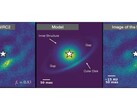For the first time ever, neuroscientists captured the brain activity of a dying human in those last stages. The event showed a final burst of coordinated neural oscillations that could explain phenomena like “life recall” and near-death experiences.
According to an article on Frontiers in Aging Neuroscience about the event, it was the first empirical evidence that the brain remains active and organized even after a cardiac arrest. A team of researchers led by Dr. Ajmal Zemmar of the University of Louisville, recorded 900 seconds of electroencephalogram (EEG) data from an 87-year-old patient who suffered a fatal heart attack during epilepsy monitoring. Here is what the recording revealed.
Gamma waves and organized activity after cardiac arrest
Analysis of the EEG data showed a striking pattern. A rise in high-frequency brain waves linked to memory retrieval, perception, and conscious awareness were noticed both immediately before and after the patient’s heart stopped.
These bursts in brain waves, also called gamma oscillations, were followed by activity in the delta, theta, alpha, and beta frequency bands. Scientists think this might mean a synchronized communication across brain regions occurs even as circulation ended.
These patterns usually come up when the brain encodes or recalls information, raising the possibility that it briefly replays life events as oxygen and glucose supplies dwindle. “Through generating oscillations involved in memory retrieval, the brain may be playing a last recall of important life events,” Zemmar explained.
Implications for neuroscience and end-of-life medicine
Although, this is a singular the case of a patient with prior brain trauma, it still challenges some long-held assumptions about when consciousness truly ends. If the brain can sustain coordinated activity after cardiac arrest, then what is known as time of death might need to be reevaluated. Organ donation protocols also need to be reconsidered.
The findings suggest there is a neurobiological reason for near-death experiences, where people remember vivid memories and get heightened awareness after clinical death.
While more data are needed to draw concrete conclusions, this study shares more insights into the dying brain’s electrical movement. It opens new reasons for studying human consciousness and the transition between life and death.
















